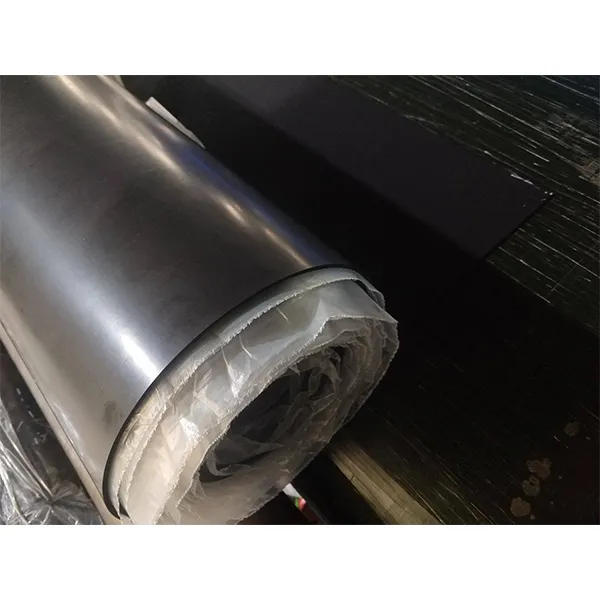Effective Methods for Choosing and Installing Auto Weather Stripping
Understanding Auto Weather Stripping Importance, Types, and Installation Tips
Auto weather stripping is a crucial component in the automobile manufacturing industry, contributing significantly to vehicle performance and driver comfort. This resilient material serves as a seal between various parts of a vehicle, taming the elements and ensuring a smoother ride. In this article, we will delve into the importance of auto weather stripping, explore different types, and offer insights into installation and maintenance.
Importance of Auto Weather Stripping
The primary function of auto weather stripping is to form an airtight and watertight seal around doors, windows, sunroofs, and trunks. This sealing mechanism is essential for multiple reasons
1. Temperature Control Weather stripping helps maintain the vehicle's interior temperature by blocking the infiltration of cold air in winter and hot air in summer. This can lead to a more comfortable driving experience and improved fuel efficiency, as the climate control system doesn't need to work as hard to maintain a stable temperature.
2. Noise Reduction Road noise, wind, and rain can create an unpleasant driving environment. Effective weather stripping minimizes external sounds, ensuring a quieter ride. This also helps in reducing driver fatigue on long journeys.
3. Water Protection Without proper weather stripping, water can seep into the vehicle, leading to mold, mildew, and other damage. This can affect electronics, upholstery, and overall vehicle structure. Weather stripping acts as a barrier against moisture, enhancing the longevity of the vehicle.
4. Dust and Debris Prevention Weather stripping prevents dust, dirt, and other debris from entering the car, keeping the interior cleaner and reducing the need for frequent cleaning.
Types of Auto Weather Stripping
Auto weather stripping comes in various materials and styles, each suited for specific applications
.1. P-Type Weather Stripping This is one of the most common types used in vehicles. It features a 'P' shape that compresses when the door is closed, providing a secure seal. This type is often made from rubber or thermoplastic.
2. Felt Weather Stripping Made from felt material, this type is typically used in older vehicles and provides a softer seal. While it is effective for reducing noise, it may not provide the best protection against water intrusion.
auto weather stripping

3. Vinyl Weather Stripping Best known for its durability and resistance to cracking, vinyl weather stripping is often used in cars with heavy usage. It withstands extreme temperatures and is easy to install.
4. Foam Weather Stripping This type consists of a soft foam material, which can be adhesive-backed for easy installation. It is ideal for filling small gaps and is typically used in areas where flexibility is required.
Installation Tips
Installing new weather stripping can be a straightforward process, provided you follow a few essential steps
1. Determine the Need for Replacement Inspect the current weather stripping for any cracks, tears, or signs of wear. Also, pay attention to water leaks, drafts, or excessive noise, which can be indicators that replacement is necessary.
2. Choose the Right Material Based on the part of the vehicle and your specific needs, select the appropriate type of weather stripping. Research and read reviews to ensure you are making a well-informed decision.
3. Clean the Area Before installing new weather stripping, clean the surface area thoroughly. Remove any remnants of the old stripping, dirt, and debris to ensure a strong bond.
4. Measure and Cut Measure the length required for each section you are replacing. Use sharp scissors to cut the weather stripping to the necessary length.
5. Adhere the Stripping Start one end and gradually press the weather stripping along the surface, ensuring it adheres correctly without any bubbles or gaps. If it’s adhesive-backed, press firmly for the best bond.
6. Check for Proper Seal Once installed, close the doors and windows to ensure the seals are tight. Look for any light penetrating through or any drafts when running your hand along the edges.
Conclusion
Auto weather stripping is an essential aspect of vehicle maintenance that impacts comfort, safety, and performance. Understanding its importance, types, and installation process can empower vehicle owners to enhance their driving experience significantly. Whether you opt for DIY installation or consult a professional, ensuring that your vehicle is fitted with quality weather stripping can make all the difference in achieving a comfortable and enjoyable ride.
-
Under Door Draught Stopper: Essential ProtectionNewsJul.31,2025
-
Garage Door Seal and Weatherstrips for ProtectionNewsJul.31,2025
-
Edge Banding Tape for Perfect EdgesNewsJul.31,2025
-
Table Corner Guards and Wall Corner ProtectorsNewsJul.31,2025
-
Stair Nose Edging Trim and Tile Stair SolutionsNewsJul.31,2025
-
Truck Bed Rubber Mats for Pickup BedsNewsJul.31,2025
-
Window Weather Stripping for Noise ReductionNewsJul.29,2025